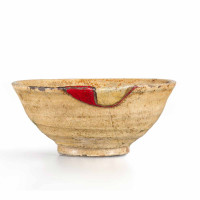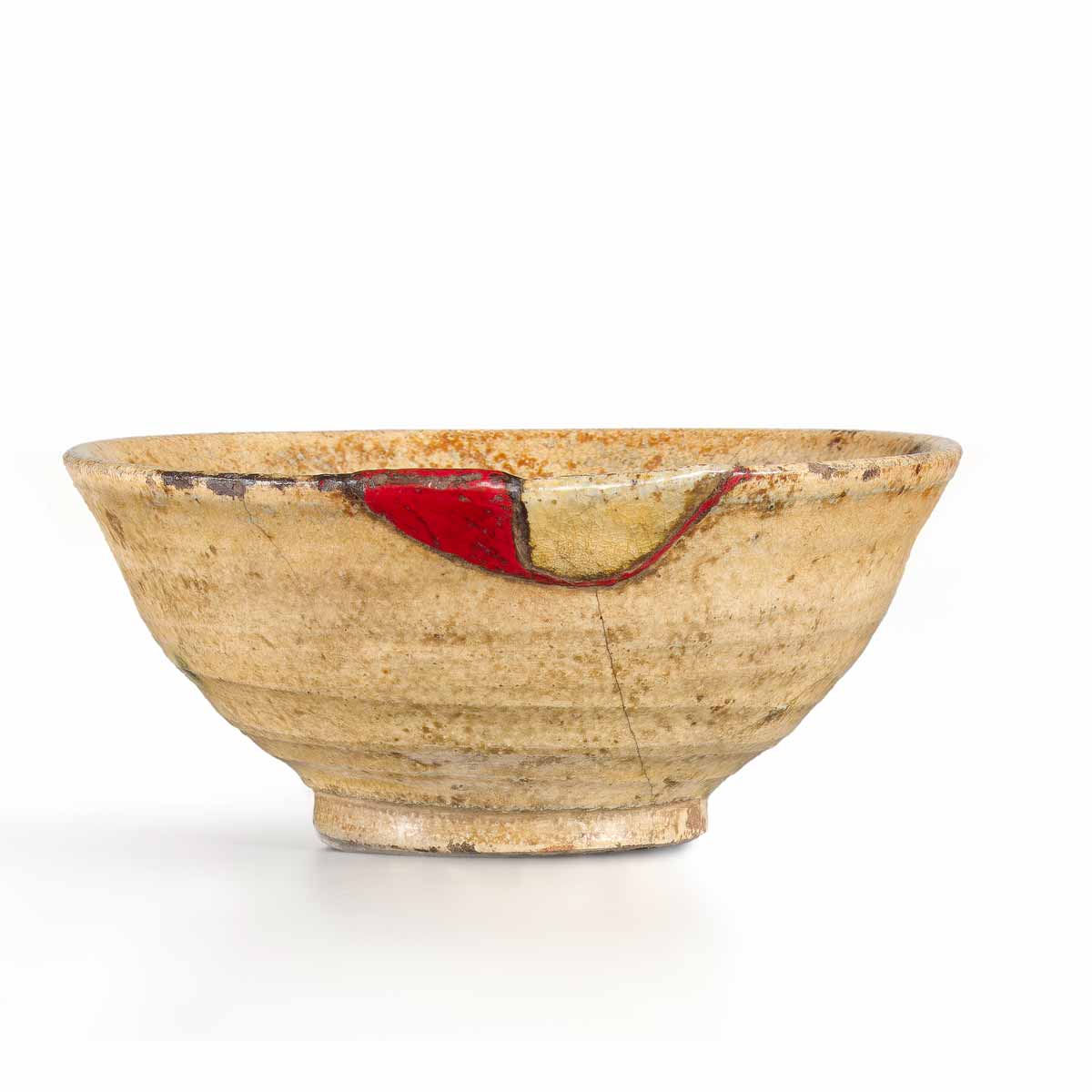Ki-Seto
Ceramic

- Contact Us
-
Size
6 (h) x 13.5 x 13.5cm
-
Period
Momoyama-Edo period, ca. 16th-17th century
Description
Ki-Seto aburage-de chawan
Yellow Seto stoneware tea bowl and red lacquer yobitsugi restoration
Ki-Seto is a high-fired ceramic that originated in the late 16th century and is part of the Mino family of styles. Of all the Mino traditions, Ki-Seto is considered the most difficult to perfect and is perhaps the least known of the Mino styles (Shino, Oribe, Setoguro, or Black Seto, and Ki-Seto or Yellow Seto) that relate almost exclusively at the tea ceremony. These styles are produced in the Seto and Mino regions of Gifu Prefecture. Aburage-de (literally fried tofu) is a thick matte yellow glaze applied with on a crumpled or semi-rough surface.
There are several variations in the art of restoring ceramics with lacquer. The most common is the kintsugi with gold joints; then comes the gintsugi, with silver; the tintsugi, in pewter; the urushitsugi, with pure lacquer; and finally the yobitsugi, or the art of inserting a shard from another piece, as in this example.

